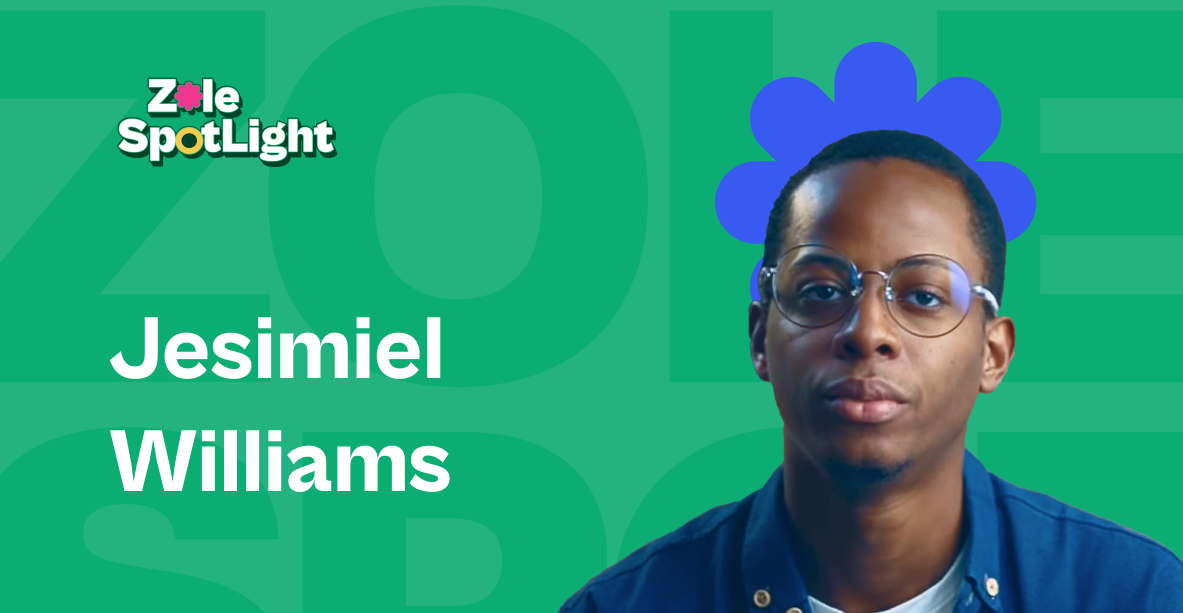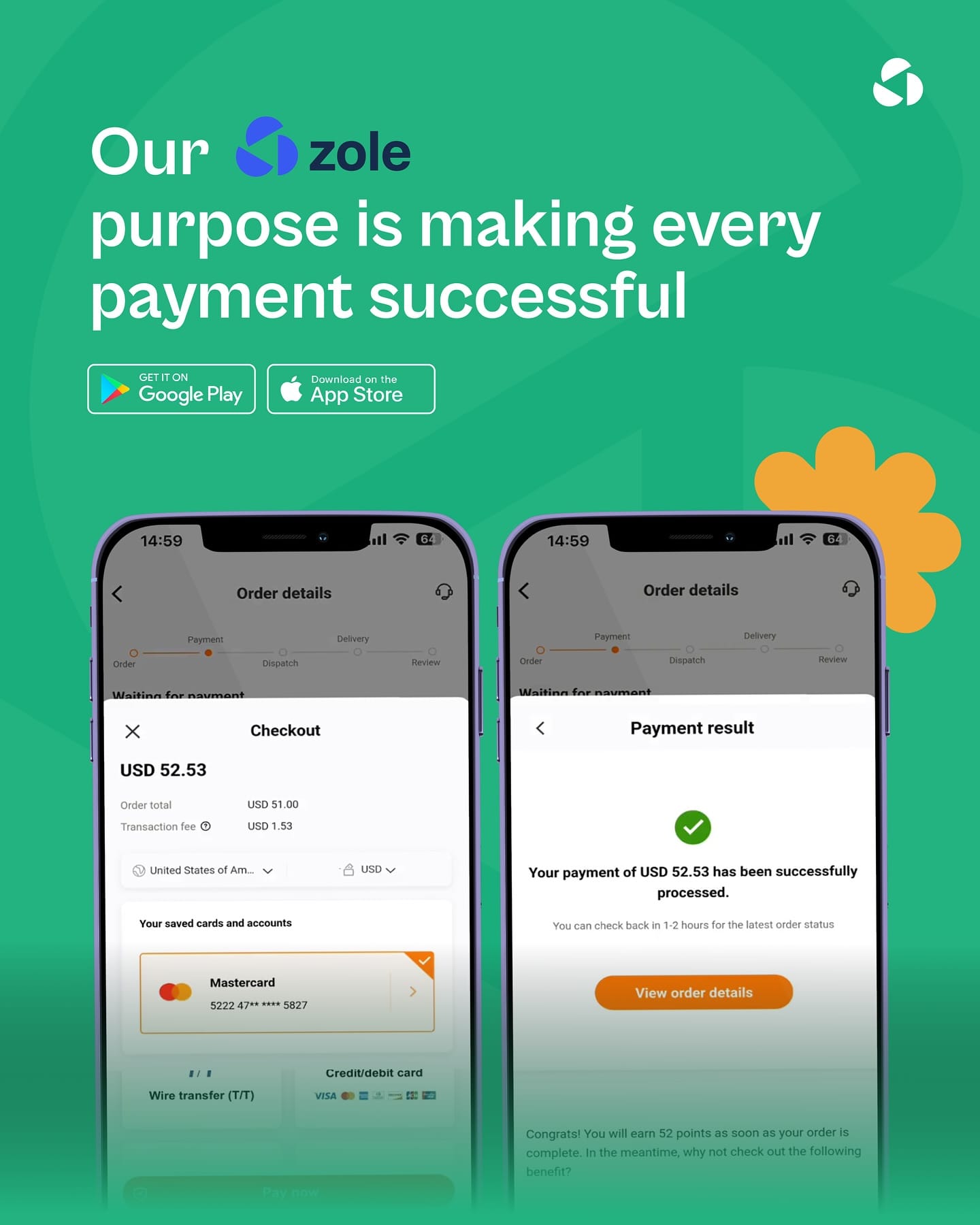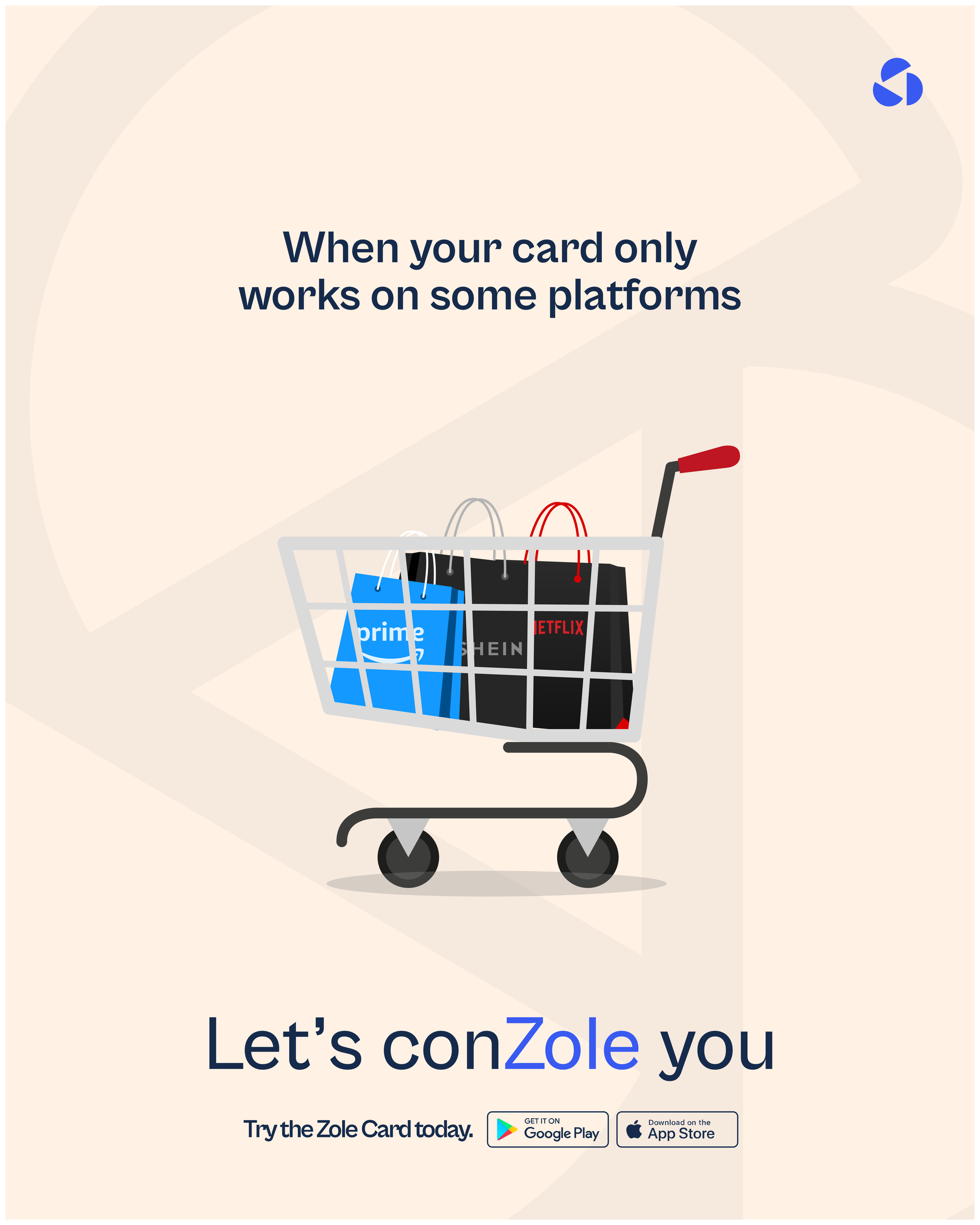He Built a Hackathon Platform for 4,000 People While Learning the Software: The Creative Who Ditched Ad Agency Offers for Startup Life

The designer who learned Webflow in real-time to build a platform for 4,000 hackathon participants and why he believes AI won't replace creatives, but specialists who use AI will replace those who don't.
Most teenagers dream about their next video game or weekend plans. In secondary school, Jesimiel Williams was captivated by his older cousin's startup and taught himself HTML and CSS to build websites for friends and family members.
"I think sometime in SS2 or SS3, my cousin founded a startup, and I was really interested in what they were building. It seemed like fascinating stuff," Jesimiel recalls. "So I started learning front-end development—very basic HTML and CSS—and would actively take projects from friends or family to build simple sites for them."
That early curiosity about how digital products come to life would evolve into something much larger: a career spanning product design, brand strategy, and creative direction across AI, telecom, healthcare, and ed-tech companies. But more significantly, Jesimiel has become one of Nigeria's most thoughtful voices on how artificial intelligence is transforming creative workflows.
Today, he's a multi-disciplinary designer and creative director who's worked on everything from complex B2B mobility software to mental wellness platforms. He's built hiring tools from scratch using Webflow, designed comprehensive research reports, and created systems that serve thousands of users across Africa. But his most compelling contribution might be his framework for integrating AI into creative work without losing the human insight that makes design meaningful.
What You'll Discover in Jesimiel's Journey:
- How his fascination (as a teenager) with his cousin's startup launched a design career
- Why he chose design over development after learning both
- The internships at Lara.ng that shaped his approach to product thinking
- How a last-minute project during exam period introduced him to product design
- Why he turned down multiple ad agency offers to join a tech startup
- His framework for using AI at every stage of the design process
- The complex B2B project that pushed him out of his "design shell"
- How he learned Webflow in real-time to build a platform for 4,000 participants
- His nuanced perspective on AI replacing designers (spoiler: it's complicated)
- The ethical considerations every AI-powered creative should understand
💡When Your Cousin's Startup Changes Everything
Jesimiel's design journey began with proximity to innovation. While most Nigerian secondary school students were focused purely on academics, he found himself drawn into the world of startups through family connections.
"My older cousin had founded a startup, and I was just really interested in what they were building. It seemed like very interesting stuff," he explains. "That exposure got me curious about how these digital products actually worked."
This curiosity translated into action. He started teaching himself front-end development, beginning with the fundamentals: HTML and CSS. But rather than just learning in isolation, he immediately began applying these skills commercially.
"While trying to pick up on web development, I would actively take projects from friends or family members to build very basic sites for them. Nothing complex, but it was real work for real clients."
This early combination of technical learning and client service would become a pattern throughout his career—always learning by doing, always solving real problems for real people.
But as his skills developed, Jesimiel made a crucial discovery about his own preferences and talents.

🎨The Moment He Chose Design Over Development
Many people who learn both design and development eventually specialize in one area. For Jesimiel, the choice became clear through practical experience.
"As I continued learning web development, I realized that I preferred the design aspects compared to the development side of things," he reflects. "So I moved into brand design, or graphic design at the time."
This wasn't a rejection of technical skills—it was a recognition of where his interests and talents converged most powerfully. He continued freelancing, but now focused on visual identity, branding, and graphic design for small companies and organizations.
While he maintained enough technical knowledge to communicate effectively with developers, his focus on design thinking and visual problem-solving positioned him uniquely in Nigeria's growing tech ecosystem.
During university, he secured internships at Lara.ng, gaining exposure to how design functions within larger organizational contexts. These experiences provided crucial insights into the business side of creative work—understanding client needs, working within constraints, and delivering solutions that serve both user needs and business objectives.
But his real breakthrough into product design came through an unexpected opportunity that would test both his skills and his commitment.
📚The Exam Period Project That Changed Everything
Sometimes the most important opportunities arrive at the worst possible times. For Jesimiel, his entry into product design came when he had exams just weeks away.
"Someone at CareerBuddy had seen some brand designs I'd done on another project and said, 'We're building a new product. Are you available to help build out the website?' It was terrible timing because I was in school and had exams maybe a couple of weeks later."
"I left school and went to their office for an interview. I had this little notebook, took extensive notes, and it turned out to be an amazing project. I worked with them for several months to get their site for Tambourine launched."
The project wasn't just about building a website—it was about understanding how digital products serve user needs while achieving business goals. The complexity and strategic thinking required revealed a new dimension of design work that captivated him.
"After completing that project, I was like, 'You know what? I really enjoy this. I want to understand all the nuances around product design.' That's really how I transitioned from brand design into product design."
This decision to prioritize opportunity over convenience would become a defining characteristic of his career approach.

🎓COVID, Graduation, and the Startup Decision
Jesimiel graduated during the COVID pandemic year—a time when many new graduates faced unprecedented uncertainty about career prospects. He found himself with multiple offers from advertising agencies, but also with an opportunity that intrigued him more.
"Post-graduation, I had several offers from ad agencies. But while deciding where to go, I thought I'd work at a tech startup for a bit, which was Lara.ng. I was there for two or three weeks initially."
Those few weeks proved transformative.
"I realized, 'You know what, this is what I want to do.' After that experience, I focused my work on product design and content development—building products that people actually want to use and adopt, and creating the visuals and stories around those projects."
The decision to choose startup life over traditional advertising reflected his understanding of where the creative industry was heading. While ad agencies offered stability and established processes, startups offered the chance to shape products from conception to launch.
Since that decision, he's worked across diverse sectors: AI, telecommunications, healthcare, and education technology. But more than just applying design skills across industries, he's developed a particular expertise in helping organizations move from initial concept to functioning product.
"I've been able to help people move from idea to actual startup," he notes. "That end-to-end understanding of product development has become central to how I approach design challenges."
🤖The AI Integration That Started with Structure
While many designers approached artificial intelligence with skepticism or fear, Jesimiel's background in tech startups positioned him to see AI as another tool to be understood and leveraged strategically.
"I think I've always had an inclination toward AI tools because I literally started my career at a company that was automation-focused—Lara.ng," he explains. "But my first major experience with AI tools was definitely with ChatGPT."
His initial attraction wasn't to AI's creative capabilities, but to its problem-solving approach.
"I really enjoyed how ChatGPT was constructed. It understood complex problems. You could ask it something and it wouldn't give you random results like Google often did. That problem-understanding capability was what drew me in first."
But the real breakthrough came when he discovered AI's potential for workflow optimization.
"The biggest thing for me was how AI could help structure my work. That's something that really stood out—not replacing creative thinking, but organizing and systematizing the creative process."
This insight led him to develop a comprehensive framework for integrating AI throughout the design process, from initial research through final implementation.
🛠️The Complete AI Design Workflow
Rather than using AI sporadically or for novelty, Jesimiel has developed systematic approaches for incorporating AI tools at every stage of design projects. His framework addresses both the possibilities and limitations of current AI technology.
Research Phase: "At the start of any design project, you need solid research. For brand design projects, I'll use ChatGPT, Perplexity, or Gemini to help build questionnaires that I can share with clients to understand their vision. For product design, I need to talk to users, so I have conversations with AI to understand what questions will reveal the real problems users face."
Ideation and Wireframing: "When I'm working through early sketches and have multiple ideas competing, I test their validity with AI. I'll say, 'Here's what I'm thinking—what do you see as potential blind spots with this particular approach?' Most of the time, AI gives you alternative perspectives rather than definitive answers, which is exactly what you need during ideation."
Concept Development: "By the time I have a concept direction, I use AI for comparative analysis. 'Why do you think this concept works? Why might it not work?' AI can reference similar tools and approaches that I might not be considering."
Testing and Iteration: "For A/B testing, when I've created one version and I'm wondering about alternatives, AI helps me think through different perspectives. 'Here's an alternative approach from a similar tool—what are your thoughts on adapting that strategy?'"
Production Support: "There are production tasks that used to require manual work—removing backgrounds, extending images, generating patterns. Tools like PhotoRoom handle these incredibly well. If you're working on a visual campaign and realize the background doesn't work, you don't need to reshoot everything. AI tools can fill those gaps cost-effectively."
🖥️Two Projects That Define His Approach
Among his many projects, two stand out as representative of Jesimiel's approach to complex problem-solving and end-to-end product development.
Motions: Area Mobility Software
"Motions was perhaps the most complex project I've ever worked on," Jesimiel reflects. "It's a mobility software that aggregates data to optimize delivery routes and algorithms, helping companies manage their entire delivery ecosystem."
The complexity wasn't just technical—it was conceptual.
"You have to consider numerous variables simultaneously. It was my first major B2B project at that level of complexity, and it really pushed me out of my design shell. Prior to that, I'd mainly worked on B2C projects where user flows are more straightforward."
The project challenged him to think systemically about how different user types—delivery managers, drivers, customers, administrators—would interact with the same underlying data in completely different ways.
"I'm really excited about how that project turned out because it expanded my understanding of design thinking when you're dealing with complex, multi-stakeholder systems."
Kluster by Stutern: From Research to Platform
The second project demonstrated his ability to work across the entire product development spectrum.
"Kluster happened in two phases. First, I wrote and designed the Nigerian Graduate Report for 2023—everything from post-data collection to final publication. It's a report I've seen people reference when making career and hiring decisions, which makes me incredibly proud."
But the second phase tested both his design skills and his ability to learn new tools under pressure.
"After understanding the employment market through our research, we decided to build Kluster—a hiring platform for businesses to find the best talent in Africa. We had limited development bandwidth, so I had to build the entire platform using Webflow, which I'd never used before."
Learning complex software while managing a project timeline would challenge most professionals. Jesimiel approached it systematically.
"I basically learned Webflow through tutorials while building the actual platform. We used that tool to run a hackathon with 3,000 to 4,000 participants. It's my favorite project so far because I can say I built it end-to-end, from research through implementation."

⚖️The AI Replacement Question (And Why It's More Nuanced Than Most Think)
The question of whether AI will replace designers generates predictable responses from most professionals. Jesimiel's perspective is more nuanced, grounded in practical experience with both AI capabilities and limitations.
"Whenever people ask whether AI will replace designers, someone always responds with 'AI won't replace you—people who use AI will replace you.' But I think the reality is more complex than that."
"If you ask an AI about something you know nothing about, it always feels comprehensive and authoritative. But if you're an expert in a field, you quickly realize that AI doesn't give you 100% of what you need, and sometimes what it gives you is fundamentally flawed."
He shares a specific example from his recent coding work:
"I tried using AI to generate some code recently—set up projects on v0 and GPT, then assembled the pieces. Halfway through, I realized that if I had no coding knowledge, I would have run that code thinking it would work perfectly. But having domain expertise, I could see exactly where the problems were."
This leads to his central thesis about AI and professional work:
"AI requires someone with specialist knowledge and domain expertise to guide it properly. You need to be able to tell AI when it's wrong, when its suggestions don't make sense for your specific context."
The Designer's Irreplaceable Value:
"For someone who's developed logos and brand identities for years, when ChatGPT suggests an approach for a particular sector, you know immediately whether that aligns with what you're trying to achieve. That judgment—understanding context, nuance, and strategic objectives—that's what specialists bring."
His conclusion: "As AI currently exists, and as I expect it will be for the next few years, human specialists will remain essential. But those specialists need to understand how to leverage AI effectively."
The Ethics and Social Implications of AI-Powered Design
Beyond workflow optimization, Jesimiel thinks deeply about the broader implications of AI integration in creative work. His upcoming presentation will address not just how to use AI tools, but when and whether you should.
"There are tools you don't want to feed sensitive company data to. There are specific applications where certain AI tools work better than others. Understanding these distinctions is crucial for professional practice."
But his concerns extend beyond data security to fundamental questions about creativity and attribution.
"If you're using AI to generate images, what are the social ramifications? How does that affect creators who built the foundation that these models were trained on? These are ethical questions every creative professional needs to consider."
He points to a specific example that illustrates the complexity:
"If I create a billboard using AI-generated art in the style of Studio Ghibli, Miyazaki might not sue me, but there are real ethical questions about appropriating distinctive artistic styles without permission or attribution."
These considerations inform his approach to AI integration—viewing it as a powerful tool that requires thoughtful, ethical application rather than uncritical adoption.
Building Mental Wellness Through Data and Design
Beyond client work, Jesimiel has been developing a passion project that combines his design skills with emerging AI capabilities and social impact.
"Outside of commercial projects, I've been working with friends on using data and AI to advance mental wellness for young people," he explains. "It's a small project, but it represents how I think about design's potential for social good."
The project reflects his belief that good design isn't just about creating functional or beautiful products—it's about understanding human needs and creating solutions that genuinely improve people's lives.
While he doesn't elaborate extensively on the specifics, the mental wellness focus aligns with broader trends in African tech toward addressing local social challenges through innovative digital solutions.
The Jesimiel Framework: Strategic Lessons for Creative Professionals
Jesimiel's journey from secondary school web development to AI-integrated design leadership offers several strategic insights for creative professionals navigating technological change:
Start with curiosity, not fear. His early exposure to startups created openness to new tools and approaches. Rather than viewing AI as a threat, he approached it as another technology to understand and leverage.
Learn by doing, with real stakes. From building websites for family friends to learning Webflow while managing a 4,000-participant hackathon, he consistently chooses learning opportunities with actual consequences.
Develop domain expertise before depending on AI. His emphasis on specialist knowledge as AI's necessary complement reflects understanding that tools amplify capabilities but don't replace judgment.
Think systemically about complex problems. His success with B2B projects came from developing frameworks for managing multiple stakeholder perspectives and complex data relationships.
Consider ethical implications proactively. Rather than adopting new tools uncritically, he thinks through social and ethical ramifications before implementation.
Build end-to-end capabilities. His ability to handle projects from research through implementation makes him uniquely valuable in fast-moving startup environments.
From that secondary school student fascinated by his cousin's startup to a creative director reshaping how AI integrates with design thinking, Jesimiel's story illustrates what becomes possible when technical curiosity combines with strategic thinking and ethical awareness.
His journey isn't just about individual success—it's about understanding how creative professionals can thrive during periods of technological transformation by becoming more thoughtful, not just more efficient, in their work.
Whether you're just starting out in design or looking to integrate AI into established creative practices, the question isn't whether these tools will change your work. The question is: will you approach that change with the curiosity, ethics, and strategic thinking required to use it well?
Building great products requires more than great design—it requires seamless execution across borders. While Jesimiel creates digital experiences that serve users across Africa, the financial infrastructure supporting creative careers shouldn't create friction. Zole enables creative professionals in Nigeria and Canada send and receive money internationally and build global careers without geographic limitations. Click here to get started today.



Comments ()